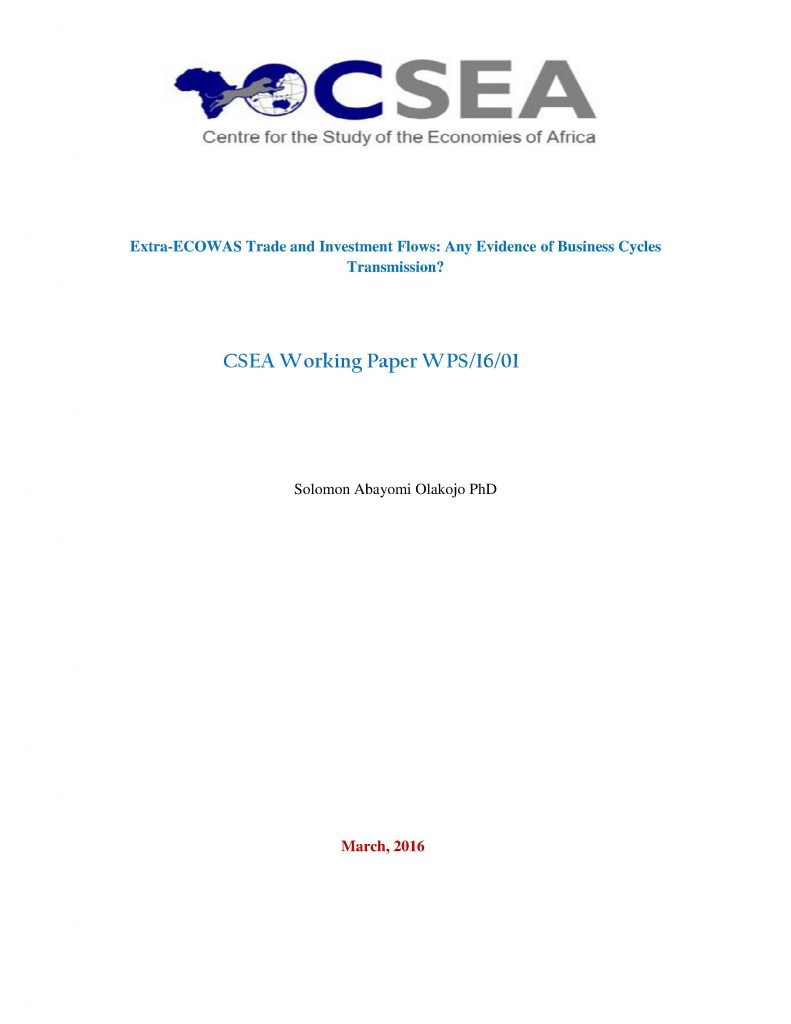Publications

July 26, 2016
Extra-ECOWAS Trade And Investment Flows: Any Evidence Of Business Cycles Transmission
This
study investigates the effects of merchandise trade and investment flows on the
transmission of business cycles between members of ECOWAS and the major trading
partnersbetween 1985 and 2014. Total trade and FDI significantly influence the
transmission of business cycles with elasticities of 1.1% and 0.7%,
respectively in the long run. There are little variations across the major
trading partners and other measures of trade flows. Intra-industry trade flows
with all partners, EU and USA influences the cross-country business cycles with
elasticities of 1.0%, 0.5% and 1.8%, respectively.
Related
Nigeria Economic Update (Issue 36)
Recently
released GDP figures reveals that the three major sectors recorded positive and
negative growth rates individually in 2017Q2. Firstly, Agricultural
sector grew Year on Year by 3.01 percent, down from 3.39 percent in 2017Q1- driven by
weaker output in crop production and Fishing sub-sectors. This is not
unconnected with the planting season and the shortage of grainsfor livestock/fish respectively.
